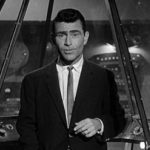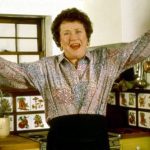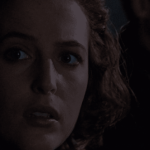 Music
Music  Music
Music  History
History 10 Less Than Jolly Events That Occurred on December 25
 Weird Stuff
Weird Stuff 10 Funny Ways That Researchers Overthink Christmas
 Politics
Politics 10 Political Scandals That Sent Crowds Into the Streets
 Weird Stuff
Weird Stuff Ten Bizarre Facts About The Doge Meme
 Our World
Our World 10 Ways Your Christmas Tree Is More Lit Than You Think
 Movies and TV
Movies and TV The 10 Coolest Stars to Set Sail on The Love Boat
 History
History 10 Things You Didn’t Know About the American National Anthem
 Technology
Technology Top 10 Everyday Tech Buzzwords That Hide a Darker Past
 Humans
Humans 10 Everyday Human Behaviors That Are Actually Survival Instincts
 Music
Music 10 Surprising Origin Stories of Your Favorite Holiday Songs
 History
History 10 Less Than Jolly Events That Occurred on December 25
 Weird Stuff
Weird Stuff 10 Funny Ways That Researchers Overthink Christmas
Who's Behind Listverse?

Jamie Frater
Head Editor
Jamie founded Listverse due to an insatiable desire to share fascinating, obscure, and bizarre facts. He has been a guest speaker on numerous national radio and television stations and is a five time published author.
More About Us Politics
Politics 10 Political Scandals That Sent Crowds Into the Streets
 Weird Stuff
Weird Stuff Ten Bizarre Facts About The Doge Meme
 Our World
Our World 10 Ways Your Christmas Tree Is More Lit Than You Think
 Movies and TV
Movies and TV The 10 Coolest Stars to Set Sail on The Love Boat
 History
History 10 Things You Didn’t Know About the American National Anthem
 Technology
Technology Top 10 Everyday Tech Buzzwords That Hide a Darker Past
 Humans
Humans 10 Everyday Human Behaviors That Are Actually Survival Instincts
10 Things You Might Not Know about Twin Peaks
Mark Frost and David Lynch’s Twin Peaks follows FBI Agent Dale Cooper as he tries to solve the murder of teenager Laura Palmer. First aired in 1990, the show features eccentric characters, supernatural elements, and soap opera melodrama—all of which is blended together to create a surreal and intriguing series.
Twin Peaks only ran for two seasons before being canceled, although it was followed soon afterward by the prequel movie Fire Walk with Me (1992). In 2017, the one-season revival hit screens, and since then, the show’s future has been, much like the story itself, shrouded in mystery. Here are a few lesser-known (and sometimes spoiler-filled) damn fine facts about Twin Peaks.
Related: Top 10 TV Shows Cancelled Too Soon
10 Twin Peaks Was Inspired by a Real Murder
Mark Frost says that the story of Laura Palmer’s murder was inspired by “a nightmarish little bedtime story my grandmother Betty Calhoun planted in my ear as a young boy.” The body of 20-year-old Hazel Drew was found floating in a pond in upstate New York in July 1908. In order to keep him out of the woods at night, Frost’s grandmother—who lived nearby—framed Drew’s murder as “a cautionary ghost story.”
Although Frost was unfamiliar with the actual facts of the case, it’s eerily similar to Laura Palmer’s story. Drew was initially seen as a typical good girl, but she lived a secret life. Her last known actions remain unexplained: She abruptly quit her job as a domestic servant, left a suitcase of clothes at a Troy train station, and then boarded a train to Albany. She was romantically linked to a variety of shifty older men, and occult elements even started to creep into the inquest, with suggestions of hypnotism and dark magic coming into play.
David Bushman and Mark Givens have attempted to untangle the secrets of Drew’s life and death, but officially the case remains unsolved.[1]
9 Filming the Red Room
The Red Room, aka The Black Lodge, is one of the strangest parts of Twin Peaks, but one element of the location should be familiar to Lynch fans. A black-and-white chevron floor is also seen in Lynch’s surreal Eraserhead (1977)—although the film itself is in black-and-white, so it could be a different color.
One of the most challenging things about filming scenes in the Red Room was the dialogue. To make it sound as weird as possible, the actors spoke their lines backward, and then the footage was played backward. Michael J. Anderson, The Man from Another Place, had spoken in reverse to friends when he was younger, so he was particularly good at it. He even recorded a tutorial on how to speak backward.[2]
8 Twin Peaks Influenced Games
The impact of Twin Peaks on other TV shows is clear, from The X-Files to Gravity Falls. But Twin Peaks also influenced the gaming world, with the most obvious imitator being Deadly Premonition. Following FBI Agent Francis York Morgan as he tries to solve the murder of a teenage girl, the game is shot through with Twin Peaks vibes. Like Cooper, Morgan loves coffee, delivers asides to an unseen character, and finds clues in dreams. Greenvale is also filled with oddball characters, such as the Pot Lady, who is clearly modeled on the Log Lady. (LINK 7)
A few other games influenced by Twin Peaks include Remedy Entertainment’s thriller mystery games Alan Wake and Max Payne. The former is set in a small mountain town reminiscent of Twin Peaks, and the latter features a room with black-and-white chevron flooring and red curtains. Perhaps less obvious is the show’s influence on The Legend of Zelda: Link’s Awakening. Director Takashi Tezuka asked for all the characters to be “suspicious types like in the then-popular Twin Peaks.”[3]
7 Twin Peaks Was Expanded in Multiple Tie-In Novels
The world of Twin Peaks was expanded via books, all of which add more detail and depth. 1990 saw the release of The Secret Diary of Laura Palmer—which was written by Jennifer Lynch, David Lynch’s daughter. In the same year, Scott Frost, Mark Frost’s brother, published the audiobook “Diane…”: The Twin Peaks Tapes of Agent Cooper. The following year saw the publication of two further books: The Autobiography of F.B.I. Special Agent Dale Cooper: My Life, My Tapes, also written by Scott Frost, and Welcome to Twin Peaks: An Access Guide to the Town.
Two more books, both written by Mark Frost, were released around the time The Return aired. The Secret History of Twin Peaks delves into the mysterious history of the town, while its follow-up, Twin Peaks: The Final Dossier, fills in the blanks between seasons two and three.[4]
6 The Deleted Scenes from Fire Walk with Me Are Important
Lynch had to cut a substantial amount from Fire Walk with Me (1992) to get it to an acceptable runtime. Fans were desperate to see the deleted scenes, but the European investors blocked the studio from releasing the footage. Finally, in 2014, Twin Peaks: The Missing Pieces was unleashed, giving fans 90 more minutes of weirdness.
The Missing Pieces runs as interconnected vignettes rather than a cohesive narrative. Phillip Jeffries (David Bowie) gets more screen time, as does the mysterious jade green ring. Viewers also get to see Cooper’s evil doppelgänger after his manically terrifying utterance of “How’s Annie?” that ended season two.
Although The Missing Pieces didn’t have a large audience, Lynch makes a direct reference to it in The Return. Mike asks Cooper, “Is it future, or is it past?” just as The Man from Another Place did in a deleted scene.[5]
5 Killer BOB Was Unexpectedly Cast from the Crew
Killer BOB, played by Frank Silva, is one of the most important characters in Twin Peaks, but he wasn’t originally in the show. Silva was a set dresser for the pilot episode and, while moving furniture around, was told not to lock himself in by blocking the door. Lynch overhead this comment and says that “the image of Frank locked in that room popped into my head.” He asked Silva if he’d like to act and filmed the scene of him crouching down at the end of Laura’s bed without knowing how the creepy shot would fit into the story.
Later that night, they were filming the scene of Laura’s mother (Grace Zabriskie) screaming after remembering something traumatic, and the camera operator said they’d have to reshoot because someone’s reflection was caught in the mirror. It was Silva, and Lynch realized that the messed-up scene would fit perfectly with the scene he had shot of Silva earlier. An instruction to a set dresser and an accidental appearance on camera led to one of the most terrifying villains in TV history.[6]
4 Lynch Created Roles for Specific Actors
Along with creating the role of BOB for Silva, Lynch also created a number of other Twin Peaks roles for specific actors. Sheryl Lee was hired for just a few days to play Laura, and apart from playing a corpse, she had only one scene as an alive character. It was this flashback scene with Donna (Lara Flynn Boyle) that convinced Lynch that she had “a presence and a natural ability.” He expanded Laura’s character and even gave Lee another character to play: Laura’s brunette cousin, Maddy.
The same thing happened with Al Strobel, who had only one arm and was cast as a tribute to The Fugitive (1993) in the pilot. But after hearing Strobel speak, Lynch decided he “had to write something for that voice.” The character of Mike was subsequently written, and Strobel got to recite the iconic “Fire Walk with Me” poem. Mädchen Amick auditioned for Donna, but Lynch decided to write her an entirely new character, Shelly. “They just liked me in the room, so they wrote something for me,” Amick recalls.
Frost and Lynch also planned to create a spin-off for Sherilyn Fenn’s character, Audrey Horne, which would set “her loose in Hollywood, in a modern noir.” The project ended up going ahead without Fenn and became Mulholland Drive (2001).
A story change that was also down to the actors was Audrey and Cooper not pursuing a romantic relationship, despite their obvious chemistry. According to Fenn, “Lara [Flynn Boyle] was dating Kyle [MacLachlan], and she was mad that my character was getting more attention, so then Kyle started saying that his character shouldn’t be with my character because it doesn’t look good, ’cause I’m too young.”[7]
3 Queen Elizabeth II Said No to a Private Paul McCartney Show to Watch Twin Peaks
Angelo Badalamenti, the composer of Twin Peaks’s music, once worked with Paul McCartney at Abbey Road Studios and recalls a story McCartney told about Twin Peaks preventing him from performing a private show for Queen Elizabeth II’s birthday.
McCartney saw the Queen just before he was about to perform and said, “Your Highness, I’m so delighted that you invited me to help celebrate your birthday.” Unexpectedly, she apparently replied: “I’m sorry, but I can’t stay. It’s five minutes of eight; I must go upstairs and watch Twin Peaks.” McCartney went on to perform for her multiple times throughout his career, though, including at her Golden and Diamond Jubilees.[8]
2 Kyle MacLachlan Imitated David Lynch in His Performance
MacLachlan’s performance of Cooper was partly based on Lynch. “David is definitely an influence,” he said in a 2017 interview with Vulture. “He has a precision to him and an empathy to him. He understands the human condition. He can get very animated talking about coffee or cherry pie or something like that, stuff he really likes.” These qualities definitely also apply to Cooper.
Lynch also influenced MacLachlan’s performance of child-like Dougie Jones in The Return. When Dougie yells “hello” each time he hits a jackpot in the casino, MacLachlan channeled Lynch: “Those were my chances to imitate David, who also does that ‘HelloooOOOOHoooo!’”[9]
1 A Fake Scene Was Shot to Hide Killer’s Identity from Cast & Crew
Frost and Lynch were so secretive about who killed Laura Palmer that they even filmed a fake scene to keep the cast and crew in the dark. In an interview at the 1993 Twin Peaks Festival, Silva revealed that he shot Maddy’s murder scene as BOB, Ray Wise shot it as Leland Palmer, and Richard Beymer shot it as Benjamin Horne. “Sheryl Lee had to get killed by all three of us; she was like beat by the end of the day,” he explained. Silva and Wise’s takes were mixed together for the episode, but Beymer’s version has never been released.
However, the original plan was to never reveal the killer. In 1997, Lynch told Rolling Stone, “It was not supposed to get solved. The idea was for it to recede a bit into the background, and the foreground would be that week’s show.” But ABC wanted the killer’s identity to be resolved at the end of the first season. Frost and Lynch resisted, but the network continued to pressure the pair, and it is likely that the mid-season two reveal was timed to coincide with sweeps season when networks try to attract larger viewership numbers in a bid to boost their advertising rates.[10]








